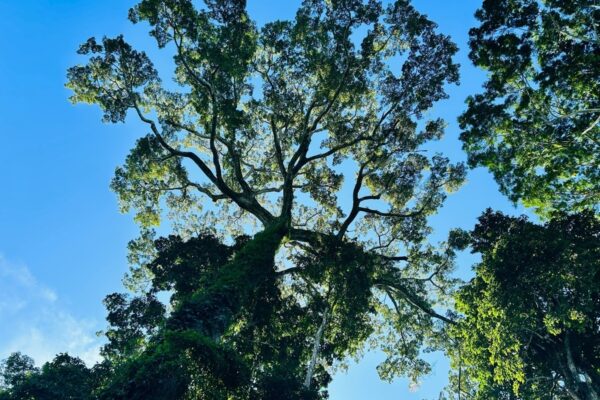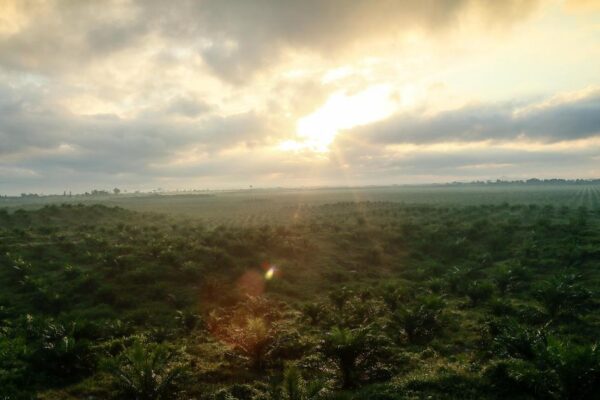3 - 4 minute read
Sofia worried every time Adam, her husband, went to work. Adam worked most nights to load trucks transporting timber to nearby Perawang or Pekanbaru, Indonesia.
It would be between two and five in the morning before he returned home.
“I wasn’t too worried about wild animals,” Sofia said. “I was worried about him being arrested.”
Avoiding law enforcement was the reason Adam and his colleagues chose to work in the dark. Logging from forests around their village is against the law. Forests here are divided into an Asia Pulp & Paper (APP) conservation area and a wildlife reserve managed by the Riau Natural Resources Conservation Agency. Both are part of the 700,000-hectare Giam Siak Kecil Peat Biosphere Reserve, a predominantly peat swamp area that acts as a natural water reservoir, carbon sink and wildlife habitat for species such as the Sumatran elephant and tiger.
As a concession holder in the area, APP has set aside land for conservation following HCV (High Conservation Value) and HCS (High Carbon Stock) assessments carried out between 2014 and 2015. They have also used satellite monitoring and patrols to protect the area. However, challenges with illegal activities remain – logging being one of them.
Logging is a tough, gritty job, Adam said.
"I carried the logs myself, sometimes 200 to 300 meters away," he said.
However, his options are limited. Logging is by far the most profitable source of income; earning him between IDR 500,000 to 800,000 every four days. His day job – spraying fertiliser at a local plantation, for example – only earns him IDR 70,000 a day. This is less than IDR 500,000 a week.
Adam also has a small garden, where he grows oil palm and fruit trees. But most of his palm trees are damaged by wild boar and don’t produce fruits.

To bridge the gap between forest conservation and people like Adam, APP and Earthworm Foundation launched a Collaborative Conservation Management (CCM) pilot in mid-2018, targeting four villages in the Giam Siak landscape. As deforestation is often interwoven with poverty, land tenure and legislation, efforts revolve around four main pillars – community livelihoods, forest protection, conflict resolution and stakeholder engagement.
Adam – like others in his community – has been a part of these
efforts for almost three years now. In that time, he has gotten involved
in mapping the surrounding land; as well as training on non-timber
forest products, and forest conservation and restoration.
Adam juga merupakan anggota kelompok tani yang mengelola 40 hektar lahan yang dialokasikan oleh APP untuk digunakan oleh masyarakat. Dengan bantuan Earthworm, kelompok ini telah membangun kebun pembibitan dan berencana menggunakan lahan tersebut untuk agroforestri. Merawat bibit tanaman kini menjadi kegiatan harian Adam dan rekan-rekannya. Mereka telah menanam bibit kemiri, nanas, pinang, jengkol, dan durian; dan akan menggunakan pohon-pohon tersebut untuk agroforestri dan mengembalikan kawasan hutan.
“Saat merawat pembibitan, saya belajar membuat pestisida dan pupuk organik yang dapat saya gunakan di kebun sendiri,” katanya.
Meskipun Adam telah berhenti bekerja sebagai penebang kayu, sebagian besar rekan-rekannya masih membagi waktu mereka antara kebun baru dan mencari kayu. Sebagian besar masih mengandalkan penebangan untuk menghidupi keluarga mereka. Memberikan alternatif untuk menjaga hutan tetap berdiri merupakan tantangan besar, terutama transisi ke mata pencaharian baru yang lebih berkelanjutan.

Ayun – the village elder who was inaugurated as the Melayu Customary Head in early this year – understands this challenge. He understands that the forest will disappear if we continue as we are. But his people also need to eat.
“Life here isn't easy,” Ayun said. “It is not surprising that illegal logging persists.”
Ayun remembers the forest being thicker when he was little, and the
land was theirs. People made a living from fishing, gathering rattan,
resin and honey from the forest, hunting deer, and growing rubber and
paddy. In early 90s, the land slowly started being re-designated for
plantations and protected areas.
Pada tahun 2021, Ayun bergabung dalam pelatihan pemetaan partisipatif dengan Earthworm.
“Ini adalah kesempatan untuk menata kembali persepsi dan aspirasi orang-orang tentang penggunaan lahan, baik untuk konservasi maupun budidaya,” ujarnya.
Melalui proses pemetaan, Ayun mendapat gambaran yang lebih baik tentang daerah mana yang memiliki disepakati oleh masyarakat, perusahaan, dan pemerintah dengan tepat; dan daerah mana yang tidak.
“Saya menyambut baik proses partisipatif ini,” katanya. “Saya berharap hal ini akan menghasilkan rencana tindak lanjut yang melindungi masyarakat dan hutan pada saat yang bersamaan.”
Selain bekerja dengan anggota masyarakat seperti Adam dan Ayun, APP dan Earthworm terus melibatkan lembaga kehutanan lokal, perusahaan swasta, dan pihak yang terkait dengan lanskap untuk mendapatkan dukungan mengimplementasikan program.
****
Dengan pertimbangan sensitivitas topik ini, nama Adam dan Sofia telah diubah demi melindungi identitas mereka.


